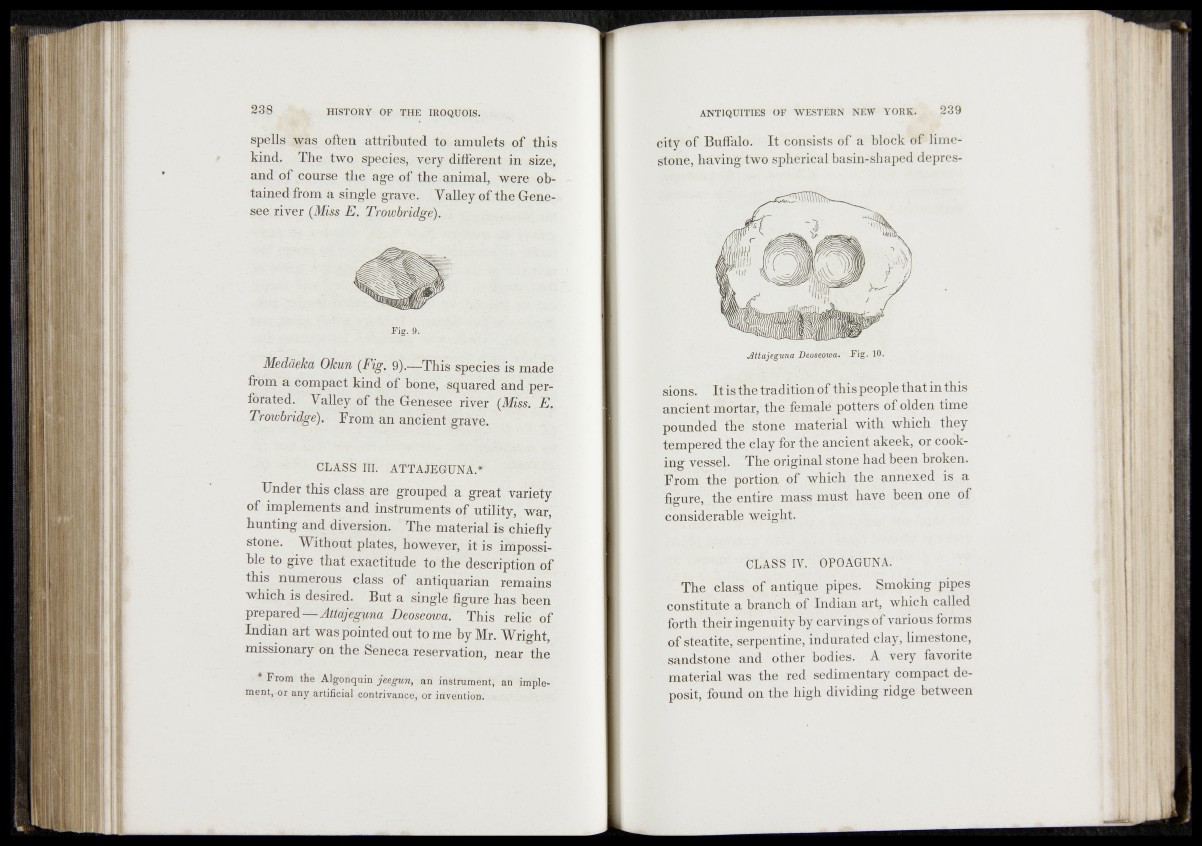
spells was often attributed to amulets of this
hind. The two species, very different in .size,
and of course the age of the animal, were obtained
from a single grave.; Valley of the Genesee
river (Mips E. Trowbridge).
Medàeka Okun (Fig. 9).—'This species is made
from a Compact kind of bone', squared and perforated.
Valley of the Genesee river (Miss. E.
Trowbridge). From an ancient-grave. "
CLASSHII. -ATTAJEGUNA.*
Under this class, are grouped a great variety
of implements and instruments of utility, war,
hunting and diversion. The material is Chiefly
stone. Without plates, hoWeyer, it is iMpossh
ble to give that exactitude to the description of
this numerous class of antiquarian remains
which is desired. But a single figure has been
prepared —• Attajegyna Deoseowa. This relic of
Indian art was pointed out to me by Mr. Wright,
missionary on the Seneca reservation, near the
From thé Algonquin jéegun, an instrument, an implement,
or any artificial Gontrivançe,:or itïveiitiori. -
city of Buffalo. It consists of a block of limestone,
having two spherical basin-shaped depres-
Attajeguna Deoseowa. -Fig. 10-
sions. Itis the traditionof this people that in this
ancient mortar, the female potters of olden time
pounded the' stone material with which they
tempered the clay for the ancient akeek, or cooking
vessel.. .t The original stone had been broken.
From the portion of which the annexed is a
figure, the entire mass must have been one of
considerable weight.
CLASS IV. OPOAGUNA.
The Class of antique pipes. Smoking pipes
constitute a branch of Indian art, which called
forth their ingenuity by carvings of various forms
of steatite, serpentine, indurated clay, limestone,
sandstone and other bodies. A very favorite
material was the red sedimentary compact deposit,
found on the high dividing ridge between